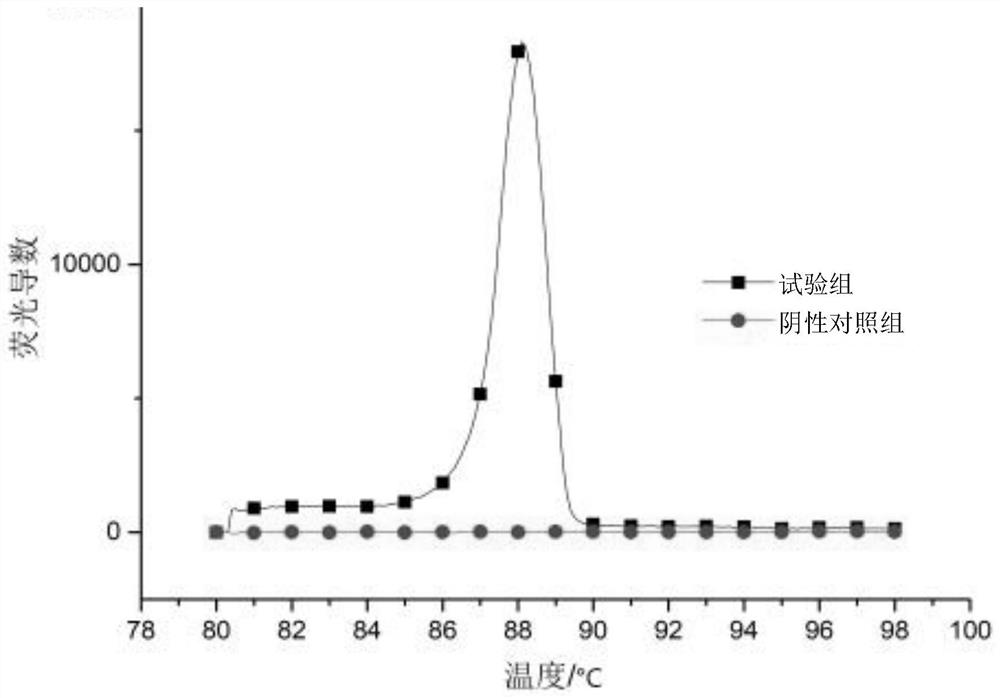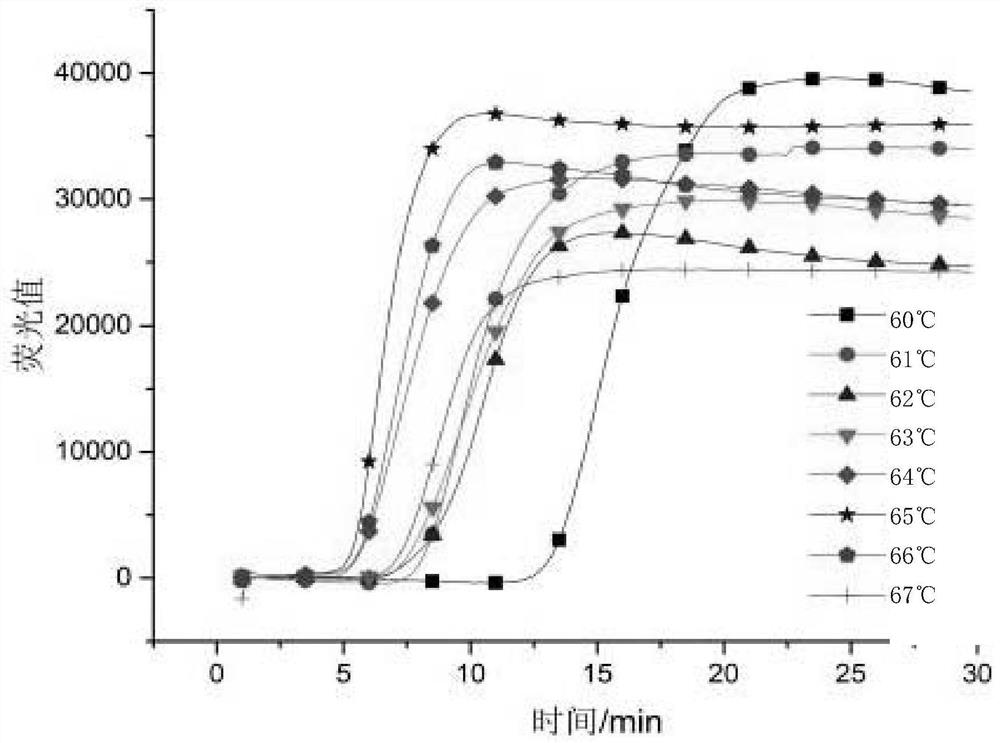Constant-temperature detection method for identifying lactobacillus brevis as well as special primer and kit thereof
A technology of Lactobacillus brevis and reagents is applied in the field of constant temperature detection method for identifying Lactobacillus brevis and special primers and kits, which can solve the problems of complicated operation, unstable results, and high requirements for operators, and achieves easy identification of results and high detection efficiency. Short-cycle, highly specific effects
- Summary
- Abstract
- Description
- Claims
- Application Information
AI Technical Summary
Problems solved by technology
Method used
Image
Examples
Embodiment 1
[0060] Example 1. Primer Design for LAMP Detection of Lactobacillus brevis
[0061] Multiple specific nucleic acid fragments of Lactobacillus brevis were screened through a large number of sequence comparisons, and after LAMP primer design and pre-experimental effect verification, a LAMP primer set with the best effect was finally obtained, named as the specific primer set. The target sequence of the specific primer set is shown in sequence 1 of the sequence listing.
[0062] The specific primer set consists of six primers, the sequences of which are as follows:
[0063] Primer F3 (sequence 2 of the sequence listing): 5'-AAACCGCCAAGCCGATTG-3';
[0064] Primer B3 (sequence 3 of the sequence listing): 5'-GCGGTTTTGGCTTTTAAGGT-3';
[0065] Primer FIP (sequence 4 of the sequence listing): 5'-ACCAATTGCTGGTCCAGGTGTTAACGTTGGAACTCCCATCAC-3';
[0066] Primer BIP (sequence 5 of the sequence listing): 5'-AATACGCATACCAAGCCGCTCAGCCTGTTGCTGACGTTCAT-3';
[0067] Primer LF (sequence 6 of t...
Embodiment 2
[0069] Embodiment 2, the effect comparison of primer set
[0070] When screening to obtain specific primer sets, pre-experiments were carried out on a large number of primer sets to compare effects. This embodiment is only an exemplary display of partial effect comparisons.
[0071] The primer sequences of the three primer sets are listed in Table 1. Each primer was artificially synthesized. The P1 primer set is the specific primer set in Example 1. The P2 primer set and the P3 primer set are exemplary other primer sets in the screening process.
[0072] Table 1
[0073]
[0074] Three primer sets were used to carry out LAMP reaction to compare the effects.
[0075] The tested bacteria are: Lactobacillus brevis CICC24450.
[0076] 1. Take the bacteria liquid for testing (bacterial concentration is 10 5 CFU / mL), treated at 99°C for 5min, then terminated the reaction at 4°C, collected the supernatant to obtain a template solution containing genomic DNA.
[0077] 2. Pe...
Embodiment 3
[0082] Embodiment 3, optimization of reaction temperature
[0083] The tested bacteria are: Lactobacillus brevis CICC24450.
[0084] 1. Take the bacteria liquid for testing (bacterial concentration is 10 5 CFU / mL), treated at 99°C for 5min, then terminated the reaction at 4°C, collected the supernatant to obtain a template solution containing genomic DNA.
[0085] 2. Perform LAMP.
[0086] Reaction system is with embodiment 2. The specific primer set of Example 1 was used.
[0087] Reaction conditions: a certain temperature (60°C, 61°C, 62°C, 63°C, 64°C, 65°C, 66°C or 67°C), 30 minutes. The reaction was carried out in a Genie II real-time fluorescence detector.
[0088] Fluorescence amplification curve see image 3 . The optimal temperature for amplification is 65°C.
PUM
 Login to View More
Login to View More Abstract
Description
Claims
Application Information
 Login to View More
Login to View More - R&D
- Intellectual Property
- Life Sciences
- Materials
- Tech Scout
- Unparalleled Data Quality
- Higher Quality Content
- 60% Fewer Hallucinations
Browse by: Latest US Patents, China's latest patents, Technical Efficacy Thesaurus, Application Domain, Technology Topic, Popular Technical Reports.
© 2025 PatSnap. All rights reserved.Legal|Privacy policy|Modern Slavery Act Transparency Statement|Sitemap|About US| Contact US: help@patsnap.com



